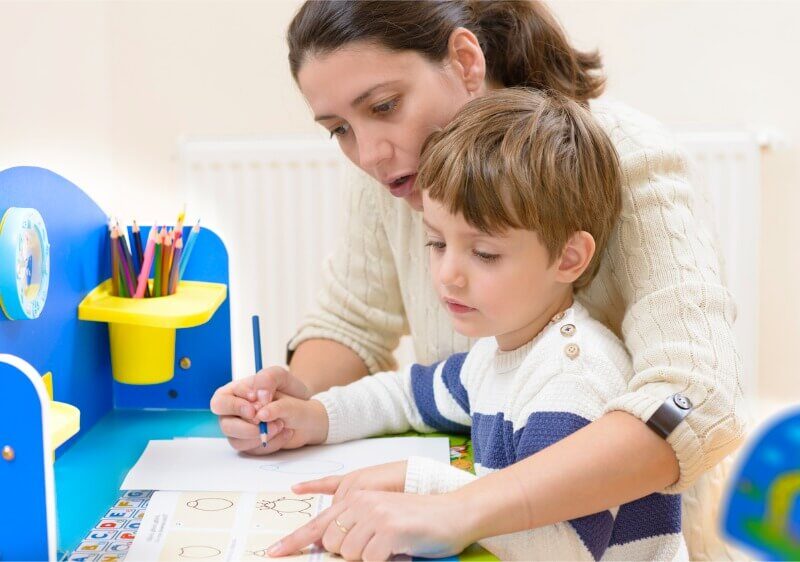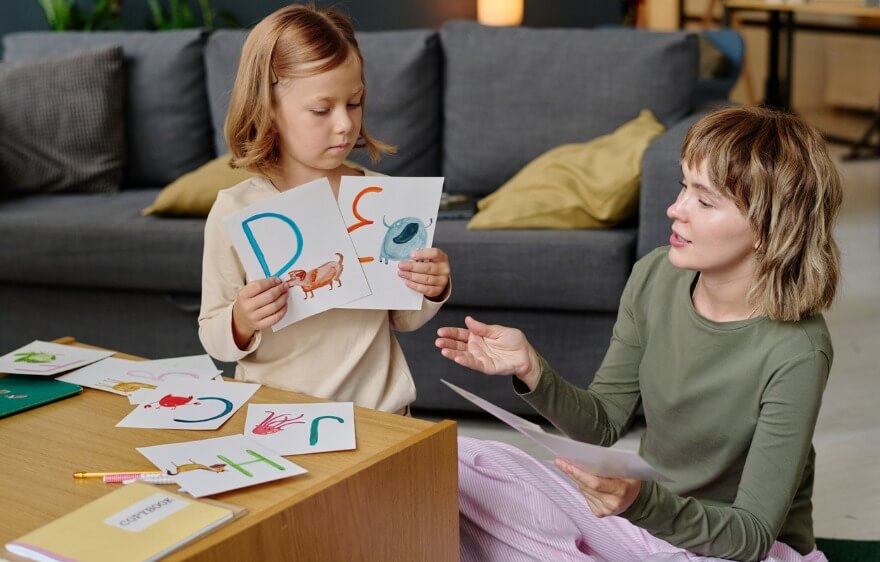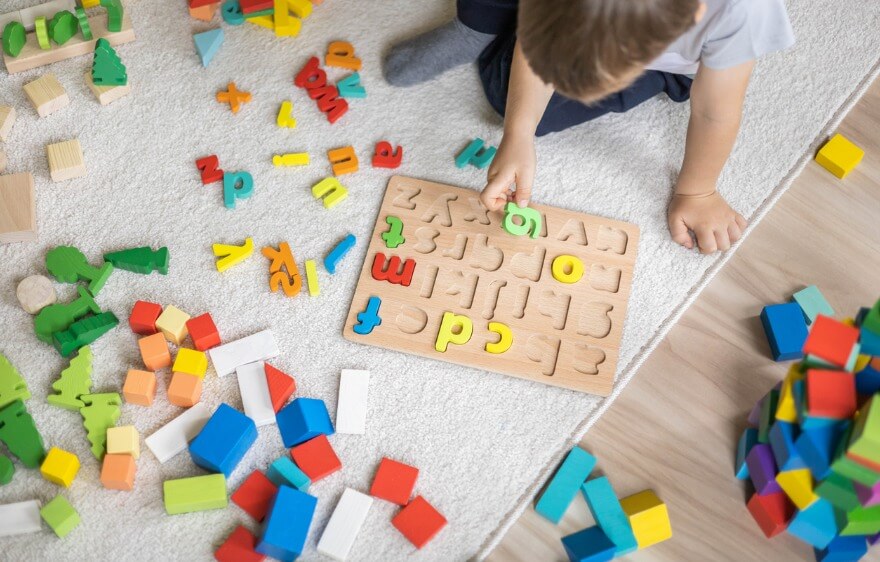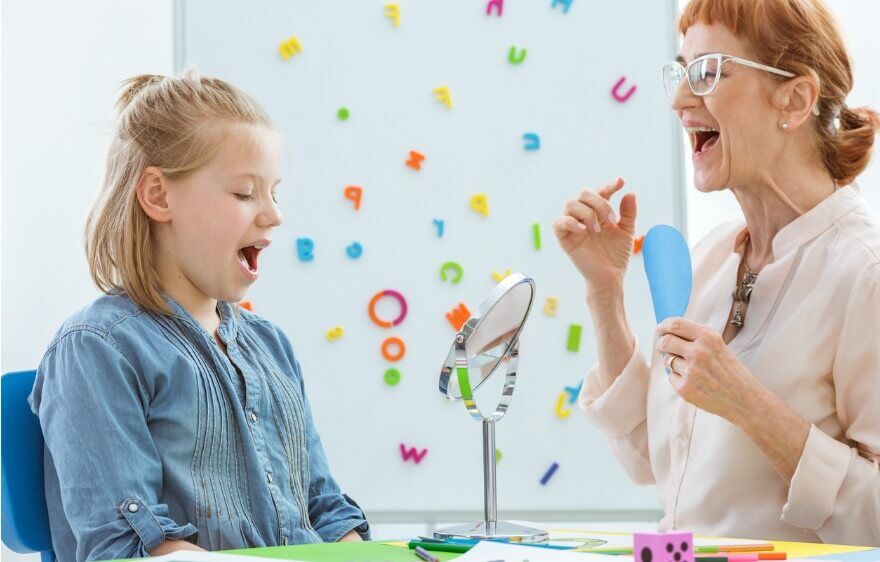Speech therapy is a journey of discovery, growth, and empowerment — not just for your kiddos and their families, but for you too! As many speech-language pathologists (SLPs) know, one area that can need significant attention is denasalization. If you’re wondering how to craft practical speech therapy denasalization goals and implement them in a therapy plan, you’re in the right place.
In this helpful guide, we’ll explore denasalization’s basics, its importance in speech therapy, and practical examples to help speech-language pathologists (SLPs) design and execute personalized goals. Ready to step up your denasalization therapy game? You’ve got this!
What Is Denasalization?
Denasalization happens when sounds that are typically nasal (like /m/, /n/, and /ŋ/) are produced without the appropriate airflow through the nose, resulting in a more oral-sounding production. For example, a child might say “dab” instead of “dam” or “doad” instead of “no.”
Denasalization can be caused by factors such as velopharyngeal dysfunction (VPD), anatomical issues, or learned speech patterns. Left unaddressed, denasalized speech may impact intelligibility and cause frustration for the speaker.
The Role of IEP Goals in Speech Therapy
Individualized Education Program (IEP) goals form the backbone of many therapy plans, particularly in school settings. This method for creating high-quality speech therapy goals provides a roadmap, ensuring therapy is intentional, measurable, and tailored to the unique needs of each client. Speech therapy denasalization goals help target specific challenges, ensuring progress is both visible and celebrated.
Effective IEP goals for denasalization should:
- Be realistic and achievable.
- Address specific sounds or contexts.
- Incorporate functional communication needs.
- Include measurable outcomes.
Speech therapy is a journey fueled by commitment, patience, and empathy. At Care Options for Kids, we believe in empowering SLPs with the tools, training, and support they need to help every child reach their communication milestones. Through a collaborative and encouraging environment, therapists can deliver care tailored to each kiddo’s unique strengths and challenges. Want to join a team that consistently achieves speech therapy success?
12 Examples of Speech Therapy Denasalization Goals
Are you ready to help your children tackle denasalization in their sessions? Here are 12 practical, achievable speech therapy denasalization goals and insights on how to implement them.
1. Producing Nasal Sounds in Isolation
Goal: The client will produce nasal sounds (/m/, /n/, /ŋ/) in isolation with 80% accuracy in structured tasks.
How to Implement: Use tactile cues and visual models to help children distinguish between nasal and oral sounds. Encourage them to hum or produce exaggerated nasal sounds to heighten their awareness of airflow through the nose.
2. Practicing Nasal Sounds in Simple Syllables
Goal: The client will produce nasal sounds correctly in CV (consonant-vowel) and VC (vowel-consonant) syllables (e.g., “ma,” “am”) in four out of five trials.
How to Implement: Use engaging tools like flashcards or apps focusing on single-syllable practice. Pair the sounds with physical gestures, like touching the nose, to reinforce the nasal quality.
3. Producing Nasal Sounds in Words
Goal: The client will correctly articulate nasal sounds in single-syllable words with 90% accuracy during structured therapy sessions.
How to Implement: Create a fun word bank of target words like “man,” “mom,” “no,” and “ring.” Use games such as bingo or scavenger hunts to keep kids motivated.
4. Discriminating Between Nasal and Oral Sounds
Goal: The client will correctly identify nasal versus oral sounds with 80% accuracy in 10 trials.
How to Implement: Develop listening tasks where children hear pairs of words, one with a nasal sound and one without, for example, “map” vs. “bap.” Use thumbs-up/thumbs-down or other visual signals for identification.
5. Producing Nasal Sounds in Phrases
Goal: The client will produce nasal sounds accurately in two- to three-word phrases with 75% consistency in structured activities.
How to Implement: Incorporate meaningful phrases like “my mom,” “no nap,” or “in the room.” Use role-playing scenarios to encourage children to integrate phrases into natural speech.
6. Using Nasal Sounds in Sentences
Goal: The client will correctly articulate nasal sounds in sentences during conversational tasks with 80% accuracy.
How to Implement: Have children create sentences using nasal-heavy words. For example, “Mom made nine muffins.” Offer immediate feedback and record their attempts for playback.
7. Enhancing Nasal Resonance Through Breathing Exercises
Goal: The client will engage in breathing exercises in four out of five trials to increase awareness of nasal airflow and resonance.
How to Implement: Use tools like pinwheels or straws to help children practice directing airflow. Singing or humming exercises can also improve awareness of resonance.
8. Reducing Denasalization in Connected Speech
Goal: The client will reduce instances of denasalization in connected speech during structured conversations and achieve at least 85% accuracy.
How to Implement: Record short conversations and review them together, focusing on instances of denasalization. Use scripts or storytelling activities to encourage practice in longer utterances.
9. Generalizing Nasal Sounds to Functional Settings
Goal: The client will use nasal sounds correctly in functional communication settings, for example, asking questions or making requests, with 80% consistency.
How to Implement: Role-play real-life situations such as ordering food or greeting friends. Praise correct use of nasal sounds and gently correct errors with visual or tactile feedback.
10. Self-Monitoring Nasal Sound Production
Goal: The client will self-monitor their production of nasal sounds in structured tasks and identify errors in four out of five attempts.
How to Implement: Teach children to use tools like mirrors or recordings to assess their performance. Encourage them to pause and reflect during practice to build self-awareness.
11. Incorporating Visual Feedback in Therapy
Goal: The client will produce nasal sounds with 85% accuracy using visual feedback tools during therapy sessions.
How to Implement: Use spectrograms, airflow sensors, or even simple tissue paper to demonstrate air movement during nasal sounds. Visual aids make therapy engaging and help solidify the concept of nasal airflow.
12. Building Confidence in Nasal Sound Usage
Goal: The client will demonstrate increased confidence in using nasal sounds correctly by participating in at least three group activities or public speaking tasks.
How to Implement: Gradually integrate children into group settings where they can practice speaking with nasal sounds. Celebrate their successes and provide constructive feedback in a supportive environment.
Tips for Success in Implementing Speech Therapy Denasalization Goals
Helping kiddos succeed with speech therapy denasalization goals requires patience, creativity, and consistency. While every journey is unique, there are tried-and-true strategies that can make the process smoother for both the SLP and the client. By using a variety of tools and techniques, you can increase motivation, build confidence, and achieve measurable progress.
- Make It Fun: Denasalization practice can feel repetitive, so keeping therapy fun and engaging is essential. Incorporate toys, games, songs, and interactive activities to hold the client’s interest and motivation. Use playful elements like puppets, silly voices, or “superhero training” themes for younger clients. For older kids, try apps, role-playing games, or competition-based activities. Fun environments reduce anxiety and encourage consistent participation.
- Provide Positive Reinforcement: Positive reinforcement is a powerful motivator, especially for children. Celebrate even minor successes to boost the client’s confidence and self-esteem. Verbal praise like “Great job with that /m/ sound!” reinforces correct production. Other rewards like stickers, tokens, or points toward a prize can keep kids engaged. Reinforcement helps increase motivation and build trust.
- Customize Activities: Each kiddo’s needs, interests, and learning styles are different, so personalizing therapy activities is critical. For instance, if a child loves animals, use animal-themed worksheets, flashcards, or toys to practice nasal sounds. If a kid enjoys music, incorporate songs with nasal-heavy words. Customization keeps sessions relevant and meaningful, making children more eager to participate and more likely to generalize their skills beyond therapy.
- Involve Families: Family support is crucial to a successful therapy plan. Share exercises, practice materials, and tips with parents and caregivers so they can reinforce nasal sound production at home. Provide simple at-home activities, like having the child identify nasal sounds during storytime or play simple “guess the sound” games. The more opportunities the client has to practice outside therapy, the faster they progress.
- Monitor Progress: Tracking progress is essential for ensuring that speech therapy denasalization goals are being met. Use data collection sheets or digital tracking tools to measure accuracy, consistency, and overall improvement. Review progress regularly with caregivers, showing them tangible results to keep them engaged. If progress stalls, adjust therapy techniques or goals to keep the momentum going.
- Build Self-Awareness and Self-Monitoring Skills: Encouraging self-monitoring helps kids become more independent and self-aware of their speech production. Teach listening for nasal and non-nasal sounds and have kids rate their performance. Use visual aids, like smiley faces or “thumbs up/thumbs down” signs, to help younger children assess their progress. Over time, your kiddos will become more conscious of their speech, leading to more significant carryover outside therapy sessions.
By incorporating these strategies, you’ll create a positive, effective therapy environment where progress feels achievable. Every small win matters, and with the right approach, clients can master nasal sounds, build confidence, and communicate with greater clarity. Remember, patience and persistence are key — for both the client and the therapist. Stay flexible, be encouraging, and celebrate every milestone along the way.
Setting Speech Therapy Denasalization Goals for Success
Achieving clear, natural speech is about more than just the mechanics — it’s about helping people feel confident and connected in their communication. By focusing on well-structured speech therapy denasalization goals, SLPs can empower kids to overcome challenges and unlock their potential.
As you craft and implement these goals, remember that every step forward, no matter how small, is a victory worth celebrating. So, make your therapy sessions light, warm, and full of laughter. Together, you and your clients can achieve amazing things!
Join the Care Options For Kids Team!
Are you ready for meaningful work that comes with benefits and not burnout? Join the compassionate care team that helps children and families live their best lives. Our clinicians provide best-in-class pediatric nursing, therapy, and school-based services. We bring individualized care to children where they live, work, and play. We have opportunities in homes, schools, and clinics across the country.
Apply at Care Options for Kids now. We make it easy to start so you can make a difference as soon as possible.






